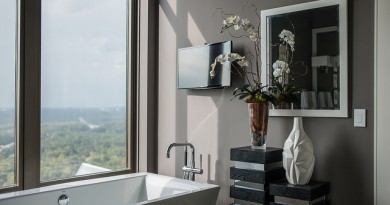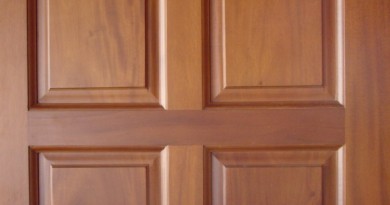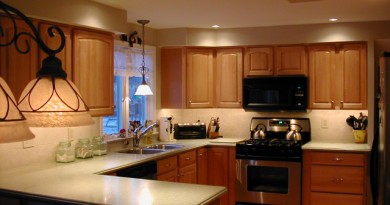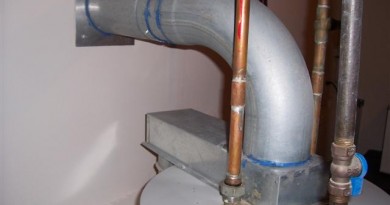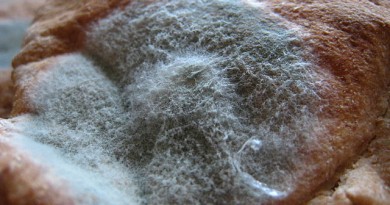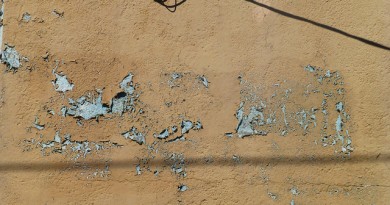How Much Does Fiber Cement Siding Cost?
Fiber cement siding is one of the most durable, practical and easily applied building materials out there, and yet it’s also one of the most economical. It manages not only to create, for pennies on the architectural dollar, a fancy and often glorious “look” to a house, but it will weather nearly 4 times more efficiently than regular siding. It’s also available, unlike most other sidings, in small panels, for corners, cornices, edges and the tiny spots that usually have to be covered (rather wastefully) with huge siding sheets.
Fiber cement siding cost is also as varied as siding brands—so here we’ll try to separate out some dollars from cents, and find some decent average prices for your home siding project.
Fiber Cement Siding Installation Cost
Installing fiber cement siding is one project you should probably leave to the pros, unless you’re a conspicuously fine do-it-yourselfer. If you are, consider yourself lucky—on average you’ll save between $1000 and $1500 for labor/installation of a typical project, depending on your area of the country (yes, prices vary by zip code) and how “customized” you want the look of the finished product to be. That figure is the average price of a professional contractor installing your project, and it doesn’t include materials or pricing averages. Materials as part of the overall fiber cement siding cost will run between $2500 and $6500, depending on the quality and durability of the products purchased. That’s an average of $3.50 to $6.25 per foot to cover only the material component of fiber cement siding cost.
Fiber Cement Siding Manufacturers
This isn’t the days of Ma Bell’s Telephone Company, the longest running monopoly in town. We’ve come a long way in the competitive edge, and in the quality of fiber cement siding as well. There are primarily three big “names” in the fiber cement siding industry, and we’ll briefly explore them all.
James Hardie Planking and Fiber-Cement is the largest and most generalized of all the manufacturers—that is to say, they make the largest number of siding units for the largest number of houses. Hardieis recommended for the durability and overall strength of their units, and, although the color choices are limited, the siding itself remains reasonable. The basic units of Hardie Fiber Cement siding include planks for individual siding pieces (HardiePlank HZ10 144), at an average price of $7-$8, and paneling (HardiePanel HZ10, a 96 in. piece), averaging $29 at most major outlets. Hardie has amended its old paneling ways as well; in the late 80s it had a PR problem, since many of its products at the time contained asbestos, now no longer in evidence.
Nichiha features the most exotic and colorful of fiber cement pieces, in finishes ranging from brick to copper sheen to flat surfaces and tile reproductions. The color range is spectacular, including Hazelnut, Prairie, Terra and basic primed looks, among many others. Border pieces, corner pieces and brick-like inlays are available as well. The average cost of fiber cement siding purchased from Nichiha ranges from $17-20 for paneling and inlay pieces, all the way up to $45-60 per piece for elaborate designs and surfaces.
Weatherside has an All-American look, and their larger pieces, while more expensive, also extend further, so fewer pieces are needed for the same coverage. The WeatherSide Purity Wavy Shingles Siding piece, for example, runs between $140-$160, while the profile 12 siding piece runs a few dollars more, about $145-$165 (including shipping).
Fiber Cement Siding Problems
As previously noted, fiber cement siding offers very poor insulation and soundproofing. It also tends to chip or break if improperly handled while moved. Other problems include the two-man factor—it takes two men to move a sheet, two men to cut it (since it tends to skid from the saw without another pair of hands holding it in place) and two men to install it. It also emits silica dust while being cut and placed; long term exposure to this by-product may result in a condition known as silicosis, a lung disease (aka Potter’s rot) that can develop into pneumonia.
Despite all these negative aspects, fiber cement siding continues to be a popular and beautiful siding option for the new home owner, as much for its elegant, expensive look as for its durability.
What Is Fiber Cement Siding, Anyway?
Before even considering fiber cement siding cost, it’s important to know exactly what it is and the benefits it offers. Fiber cement siding is a building material, which works, like all siding, to cover exposed areas of buildings in order to increase looks, color and durability. It’s made of sand and cement, molded together with fibers of cellulose, and then it’s colored and shaped to resemble siding, shingles, or any other boarded structure that may cover a house. It also comes in sheet form, and can be used on top of a house, under a house’s actual siding for additional protection, or as an underlying surface below tile (even the least expensive fiber cement siding provides good durability at an inexpensive price).
It’s fire resistant in most of its forms, and makes for decent firewalls (for real houses, not computers). It usually comes in sheets of 8 feet by 4 feet; it’s somewhat similar to drywall in its application and use, but it’s extremely heavy (usually moving it is a two-man job). As good as it is for tile under-lay and for its fire resistant qualities, it’s not soundproof, nor is it worthwhile insulation, although it usually has an excellent exterior resistance to below freezing temperatures. That’s what makes it an ideal siding product for all weathers in most locations of the country. Once hung and, if you wish, painted, it requires virtually no maintenance. Fiber cement does not shrink or swell, so cracks and splits are unlikely, making maintenance or replacement a rarity, something to factor in when considering fiber cement siding cost.
Fiber Cement Siding Colors
It would be tempting to use the cliché, “all the colors of the rainbow,” when considering fiber cement siding but not many houses look good in purple or chartreuse. The actual color palette for fiber cement siding is a somewhat more limited one, since it progresses on the spectrum from white (basic flat) through beige, cobblestone, moss, tan, khaki and chestnut/woodnut brown. These average between $8-$15 per piece, depending on the colors desired (the more shade, the greater the pigmentation and therefore the greater the price). Once you get to the dark side (of the spectrum, not the Force), fiber cement siding prices go up a bit—between $10 to $20 per piece—for timber, pine, iron grey, and Tuscan gold colors. James Hardie has the best color palette of the three “big names,” although Nichica has the most unusual and exotic ones (a brick inlay piece with multiple colors can run up to $50).
- 770SHARES

